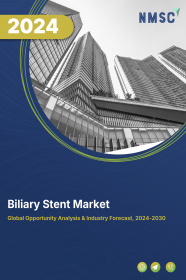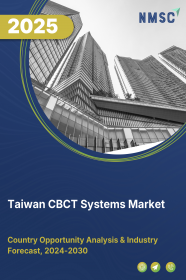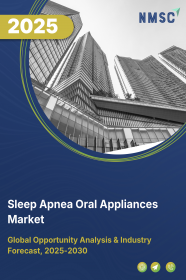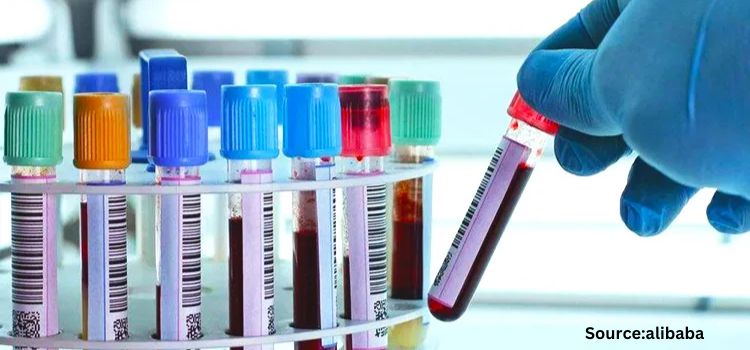
Biliary Stent Market by Type (Plastic Stents and Metal Stents), by Application (Benign Biliary Structures, Biliary Leaks, Malignant Obstruction, Bilio-pancreatic Leakages, Pancreatic Cancer, Gallstones, and Others), and by End User (Specialty Clinics, Hospitals, and Ambulatory Surgical Centre)- Global Opportunity Analysis and Industry Forecast, 2022–2030
US Tariff Impact on Biliary Stent Market
Trump Tariffs Are Reshaping Global Business
Market Overview
The global Biliary Stent Market size was valued at USD 284.5 million in 2021 and is predicted to reach USD 433.8 million by 2030, with a CAGR of 4.8% from 2022 to 2030. A biliary stent is a small mesh-like and self-expanding tube made up of either polymer or metallic materials that helps treat blockages in the bile duct to ensure seamless food digestion.
Food digestion issues can be caused by various conditions including pancreatic cancer, liver cancer, and others. The biliary stent is inserted into the liver after a surgery to make the digestive system operative and effective. Moreover, it also treats hepatic blockage and obstructive hepatic diseases such as jaundice, cholecystitis, hepato-biliary diseases, and cholangitis.
Market Dynamics and Trends
The demand for biliary stent is increasing due to rise in incidence of gallstones and rising prevalence of pancreatic and bile duct cancer. Also, the growing adoption of percutaneous transhepatic cholangiography (PTC) and endoscopic retrograde cholangiopancreatography (ERCP) that provide accurate results in the diagnosis of problems related to bile and pancreatic ducts is expected to support the growth of the global biliary stent market.
Moreover, the surging adoption of minimally invasive procedures along with the application of robotics that allow doctors to perform various types of complex procedures with precision and flexibility further drive the market growth. Furthermore, robotic-associated bile duct surgery provides certain benefits such as shorter hospital stays, lesser chances of infection, and quicker recovery as compared to traditional surgery. This factor is expected to further propel the growth of the biliary stent market.
However, high cost of plastic bile duct stents and possibility of infection and bleeding in the liver are expected to restrain the market growth. On the contrary, increasing use of biodegradable stents such as archimedes that are feasible and safe for humans is expected to create ample opportunities for the market in the coming years.
Market Segmentations and Scope of the Study
The global biliary stent market is segmented on the basis of type, application, end user, and geography. On the basis of type, the market is further segmented into biliary plastic stents and biliary metal stents. Based on application, the market is divided into benign biliary structures, biliary leaks, malignant obstruction, bilio-pancreatic leakages, pancreatic cancer, gallstones, and others. By end user, the market is classified into specialty clinics, hospitals, and ambulatory surgical centres. The geographical breakdown and analysis of each of the aforesaid segments include regions such as North America, Europe, Asia-Pacific, and RoW.
Geographical Analysis
North America holds the dominant share of the global biliary stent market at present, and is expected to boost the market during the forecast period. This is attributed to the factors such as growing liver diseases in the region due to high consumption of alcohol and flour-based products.For instance, in 2021, the Centres for Disease Control and Prevention (CDC) announced that 4.5 million adults were diagnosed with chronic liver disease in the U.S., contributing to 1.8% of the country’s total adult population diagnosed with liver disease. This factor is expected to drive the global biliary stent market.
Also, the surging usage of ambulance care centers that provide advantages such as lowered costs, quick recovery, and lower rates of infection in the surgeries related to bile duct cancer are expected to drive the market in this region. For instance, according to American Cancer Society (ACS), about 8,000 people in the U.S. are diagnosed with both intrahepatic and extrahepatic bile duct cancers. This factor increases the demand for biliary stent in the region.
On the other hand, Europe is expected to show a steady rise in the biliary stent market, due to growing geriatric population with several liver diseases. For instance, the European Association for the Study of the Liver (EASL) announced that almost 300,000 people in Europe die prematurely due to problems of the liver each year. Also, the presence of large number of hospitals that are equipped with modern smart devices including robots in surgical procedure is expected to drive the market growth in this region.
Competitive Landscape
Several market players operating in the biliary stent market include B. Braun Melsungen AG, Cook Medical, Inc., Olympus Corporation, CONMED Corporation, Boston Scientific, Becton, Dickinson and Company, ENDO-FLEX GmbH, Cardinal Health, Merit Medical Systems, Inc., and Medtronic plc. These market players are adopting various strategies such as approvals and product launches to maintain their dominance in the biliary stent market.
For instance, in October 2021, Boston Scientific announced that it received 510 (k) U.S. Food and Drug Administration clearance and CE Mark approval for its Advanix biliary plastic stents. Moreover, in October 2020, Olympus Corporation launched VorticCatchV EndoTherapy and StoneMasterV devices. These devices offer efficient bile duct stone management and retrieval for ERCP procedures. These products are designed to expand the capabilities of physicians. These devices further provide physicians a greater opportunity to achieve better patient outcomes than before and increased procedural efficiency for difficult-to-reach stones.
Key Benefits
-
The biliary stent market report provides a quantitative analysis of the current market and estimations from 2022 to 2030. This analysis assists in identifying the prevailing market opportunities to capitalize on.
-
The study comprises of a comprehensive analysis of the biliary stent market trends including the current and future trends for depicting the prevalent investment pockets in the market.
-
The information related to key drivers, restraints, and opportunities and their impact on the biliary stent market is provided in the report.
-
The competitive analysis of the market players along with their market share in the biliary stent market trends is mentioned.
-
The SWOT analysis and Porter’s Five Forces model are elaborated in the study.
-
The value chain analysis in the market study provides a clear picture of the stakeholders’ roles.
Key Market Segments:
By Type
-
Biliary Plastic Stents
-
Biliary Metal Stents
By Application
-
Benign Biliary Structures
-
Biliary Leaks
-
Malignant Obstruction
-
Bilio-pancreatic Leakages
-
Pancreatic Cancer
-
Gallstones
-
Others
By End User
-
Specialty Clinics
-
Hospitals
-
Ambulatory Surgical Centre
By Geography
-
North America
-
The U.S.
-
Canada
-
Mexico
-
-
Europe
-
The U.K.
-
Germany
-
France
-
Italy
-
Spain
-
Russia
-
Sweden
-
Rest of Europe
-
-
Asia-Pacific
-
China
-
India
-
Japan
-
South Korea
-
Australia
-
Indonesia
-
Singapore
-
Rest of Asia-Pacific
-
-
RoW
-
UAE
-
Saudi Arabia
-
South Africa
-
Brazil
-
Israel
-
Turkey
-
Remaining Countries
-
Key Players
-
B. Braun Melsungen AG
-
Cook Medical, Inc.
-
Olympus Corporation
-
CONMED Corporation
-
Boston Scientific
-
Becton, Dickinson and Company
-
ENDO-FLEX GmbH
-
Cardinal Health
-
Merit Medical Systems, Inc.
-
Medtronic plc.
REPORT SCOPE AND SEGMENTATION:
|
Parameters |
Details |
|
Analysis Period |
2021–2030 |
|
Base Year Considered |
2021 |
|
Forecast Period |
2022–2030 |
|
Market Size Estimation |
Million (USD) |
|
Market Segmentation |
By Type (Plastic Stents and Metal Stents), by Application (Benign Biliary Structures, Biliary Leaks, Malignant Obstruction, Bilio-pancreatic Leakages, Pancreatic Cancer, Gallstones, and Others), and by End User (Specialty Clinics, Hospitals, and Ambulatory Surgical Centre) |
|
Geographical Segmentation |
North America (U.S., Canada, Mexico) Europe (U.K., Germany, France, Italy, Spain, Russia, Sweden, Rest of Europe), Asia-Pacific (China, India, Japan, South Korea, Australia, Indonesia, Singapore, Rest of Asia-Pacific), Rest of the World (UAE, Saudi Arabia, South Africa, Brazil, Israel, Turkey, Remaining Countries) |
|
Companies Profiled |
B. Braun Melsungen AG, Cook Medical, Inc., Olympus Corporation, CONMED Corporation, Boston Scientific, Becton, Dickinson and Company, ENDO-FLEX GmbH, Cardinal Health, Merit Medical Systems, Inc., and Medtronic plc. |

















 Speak to Our Analyst
Speak to Our Analyst





















